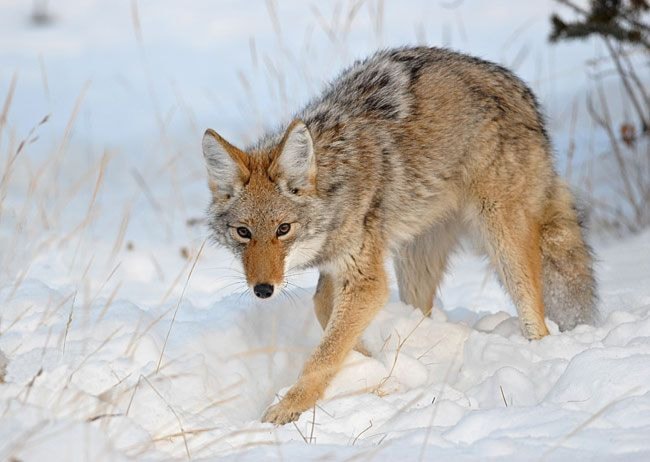by Vivian Belik
Cougar sightings in the Yukon have become almost mythical, like a Loch Ness monster or sasquatch sighting.
Reports of cougars trickled in this summer, but biologists still don’t know where these cougars live or how many there are in the territory.
Only a few Yukoners have managed to snap photos of the stealthy cat. There was the emaciated cougar carcass discovered curled up in an abandoned car near Watson Lake in 2000. Two other photos have turned up since then, but none give a full picture of the cougar’s presence.
“We do know that cougars have expanded their range into Yukon,” says biologist Ramona Maraj. She suspects there are toms (male cougars) or young cougars that are exploring the territory. “Whether they are breeding has yet to be confirmed,” she says.
Sightings of cougars in the Yukon date back to the 1940s, the same time deer started trekking north into the territory and about two decades after coyotes had arrived.
Biologist Tom Jung explains that when the Alaska highway carved its route through the Yukon in the 1940s, mammals used the road as a travel corridor. Grassy areas along the road provided food for deer, coyotes and cougars. As more roads were built, more animals started moving northwards.
Climate change may also explain why animals are migrating into the territory, says Jung.
Winters in the Yukon aren’t as cold and hard as they were half a century ago, making it more hospitable for some species to move in.
But animal migration also has longer-term causes. During North America’s glaciation period thousands of years ago, large swaths of the Yukon were covered in sheets of ice, pushing certain species southwards. “They evolved in the south and, as ice receded, it has taken time for them to re-colonize further north,” says Jung.
“A lot of species in the Yukon have a southern origin. They came back up after the ice receded and it can take a long time for this to happen, depending on how adaptable the animal is.”
How prepared are these animals when they come north? Many species do just fine, says Jung.
Yukon winters aren’t much worse than in many northern regions of North America. “When they get here, climate and food availability for most species - not all - is favourable to get established,” he says.
But how these animals affect the surrounding ecosystem in the long term is the “million-dollar question,” says Jung. Biologists in the Yukon aren’t sure, for instance, what kind of impact coyotes have had on other species in the territory. Maraj believes cougars won’t have a very noticeable effect in the territory. It’s likely that their numbers will stay relatively low, she says. And the prey they feast on - deer and elk - aren’t frequently taken by other carnivores.
It’s clear, however, that some species, like invasive plants, are taking a toll on the surrounding ecosystem. “Some plants can outcompete other species and have pretty dramatic effects,” says Jung.
Another example is the house mouse, which was introduced to North America hundreds of years ago. Until recently, the only mouse scurrying through the Yukon was the deer mouse, a rodent with a furry, bi-coloured tail. In the last few years, the house mouse, with its scaly “rat-like” tail, has made its way into the territory. They’ve been sighted in Whitehorse but haven’t yet reached the communities, says Jung, though it’s only a matter of time.
In the next few years Jung expects to see skunks sticking their noses into the Yukon and elk arriving from northeastern B.C. The elk would become the Yukon’s third herd after the Braeburn and Takhini herds, which were introduced by the government in the 1950s. “We’re really interested in monitoring and seeing what species are coming up,” says Jung.
Bats are another animal Jung has on his radar, but like the elusive cougar they can be tricky to monitor. There are two confirmed species of bats in the territory and another three that have been heard but not seen.
The Department of Environment only has so much time to track new animals, so biologists do what they can. If Yukoners notice an animal or plant they’ve never seen before while they’re out hiking or hunting, they should contact the department, says Jung.
“We do put in some time outdoors actively looking for new species, but by and large we rely on other Yukoners to tell us what they’re seeing, and we’re learning a lot from that.”
This column is co-ordinated by the Yukon Research Centre at Yukon College with major financial support from Environment Yukon and Yukon College. The articles are archived at www.taiga.net/yourYukon.
